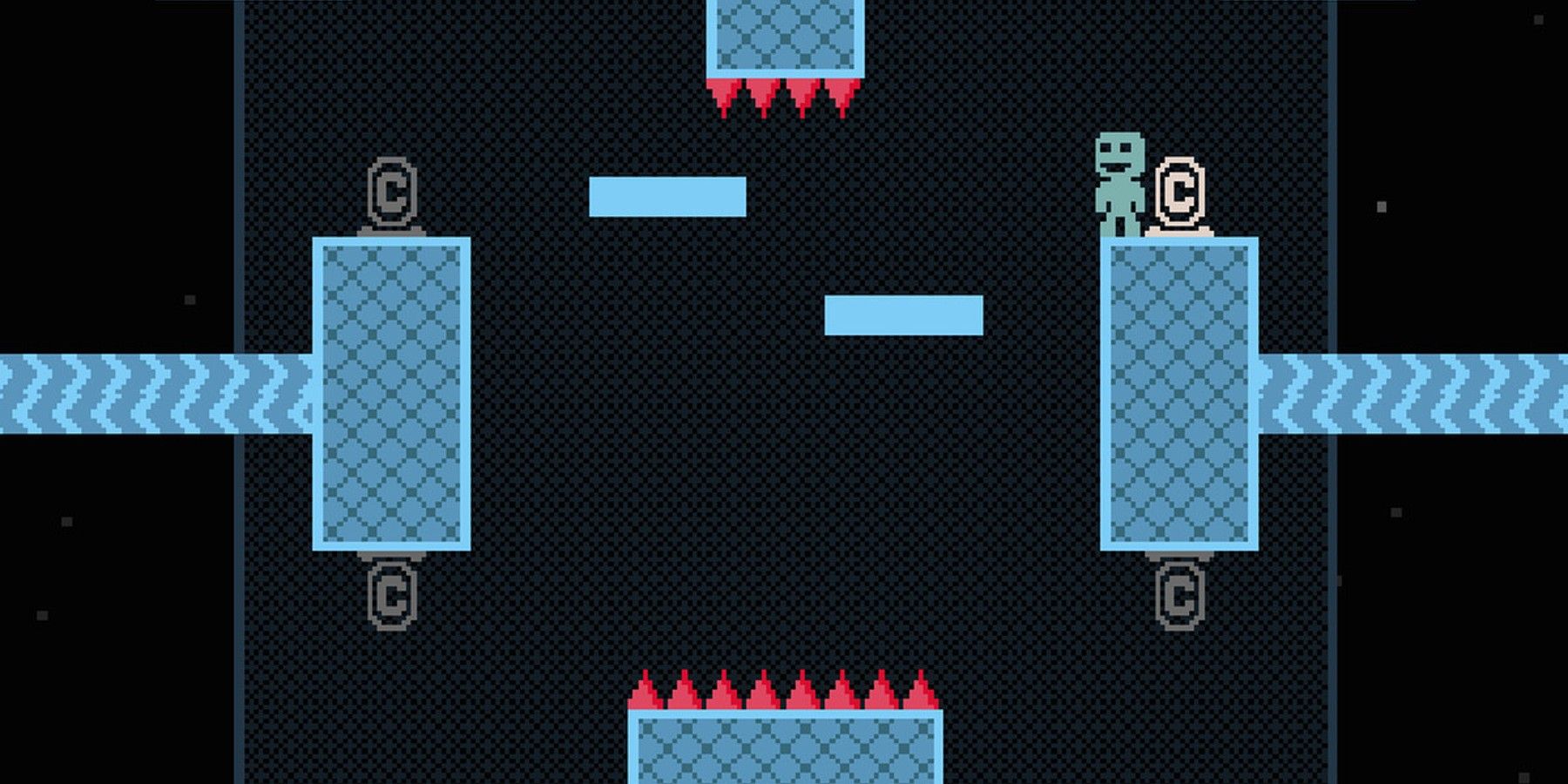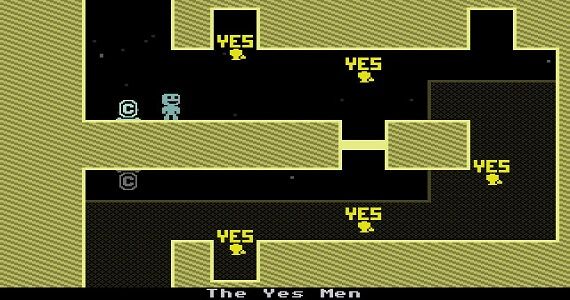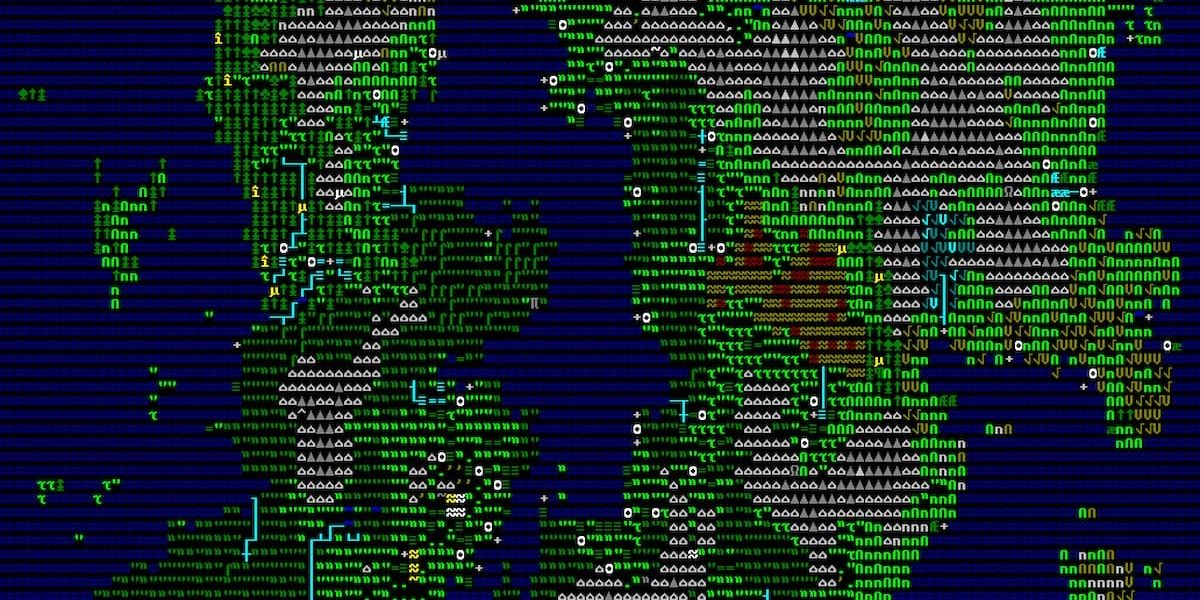VVVVVV was released in 2010 and received positive reviews for its challenging, innovative gameplay, being heralded as one of the first great indie game releases of the modern era. The popular title, which started life as a flash game on PC and Mac, was developed by one-man team Terry Cavanagh - whose 2019 title Dicey Dungeons was recently added to Xbox Game Pass - and has since been ported to all modern consoles.
Published by Nicalis, VVVVVV went further than other retro-styled indie games by featuring visuals and mechanics that could easily have been replicated on an archaic ZX Spectrum. The smash hit release proved that graphics really are unimportant for games that are able to provide original, exciting, and rewarding gameplay.
How VVVVVV Helped to Usher in a Decade of Great Indie Games
VVVVVV is a platform game with one crucial difference: the player cannot jump. Instead, the single button that the player uses throughout the game serves to reverse the game’s gravity so that their protagonist, Captain Viridian, falls upwards or downwards depending upon the spacefarer’s previous orientation.
This mechanic laid the foundation for countless variations on what seems at first like a simple premise, and the game was praised for how much innovation it was able to cram into its short run-time. Terry Cavanagh had already used the gravity-flipping idea in his previous project Sine Wave Ninja, but this time wanted to base an entire game around it, something he felt had never been achieved before.
As well as fiendish gravity-based puzzles and arcade gameplay, VVVVVV also featured a chiptune soundtrack by Magnus Pålsson, also known as SoulEye. The composer stated that he wanted to make “songs that would ingrain themselves into your minds” so that players would “go on humming them when not playing, and making you want to come back to the game even more”. This was undoubtedly achieved, helping not only to further distinguish the game but to enhance the popularity of chiptune music more widely.
The game’s plot was limited, but still made players smile with its cute characters and heroic central narrative. Following a teleportation malfunction which separates Captain Viridian from his crew, the intrepid spaceman must track down the missing astronauts in an open world map that comprises a 20 x 20 grid, with each tile representing a single screen. Each of his comrades has a name beginning with the letter V, making some sense of the bizarre title as the player gradually rounds up Violet, Victoria, Vermillion, Vitellary, and Verdigris.
These loveable characters, who wear an endearingly sad facial expression until finally rescued, are depicted via very simple sprites, in keeping with the game’s overall graphical style. Reminiscent of ZX Spectrum classics like Jet Set Willy or Manic Miner, the game utilizes large pixels and a limited range of colors to recreate the highly distinctive but incredibly utilitarian style of those 1980s hits, proving that modern graphics are not essential for a game to be popular.
Other Games That Prove Graphics are Unimportant
Since VVVVVV was first released, a huge number of indie games have utilized a pixel art style to great effect, with titles like Celeste and Hyper Light Drifter praised for their memorable visuals. However, just because pixel art is old-fashioned does not mean that these games’ graphics are of lower quality – the gorgeous pixel art on display in these releases has been described as beautiful by many fans and critics, and a number of gamers consider this style to be preferable to 3D models and environments.
However, VVVVVV goes further than simply being old-fashioned, as it intentionally utilizes extremely dated and blocky graphics to accurately recreate a 1980s gaming experience. The game has even been successfully ported to an ancient Commodore 64, proving how basic its visuals are.
Other games have successfully made use of deliberately “bad” graphics to create a distinctive style. Minecraft is perhaps the most famous recent example, with its blocky and basic visuals becoming so iconic that its real-life toys and spin-off media has to replicate them, often with amusing results. Undertale is another hugely popular title with graphics that some have criticized, although once again the cutesy sprites are essential in creating the game’s overall feel.
Some games go even further, dispensing with graphics altogether and simply utilizing the symbols available on a standard computer keyboard. Dwarf Fortress eschews visuals for a focus on worldbuilding and astonishingly complex gameplay, even procedurally generating an entire world and its lore before allowing players to commence managing their colony of dwarves. The depth of the simulation has been commended by fans since the game’s first release in 2006, with dwarves able to fall in love or develop rivalries, as well as individually modelling the health of each of their body parts. Despite its age, the game is still in development, with its creator Tarn Adams stating that Dwarf Fortress has become his life’s work.
It is clear that, despite existing in a world where modern games employ enormous teams of artists and 3D modelers, many fans simply do not care a great deal about how graphically impressive a game is. Although visually stunning games like The Last Of Us 2 will always grab headlines, there is certainly a place for titles like VVVVVV at the opposite end of the graphical spectrum.
VVVVVV is available now for iOS, PC, PS4, PS Vita, and Switch.



